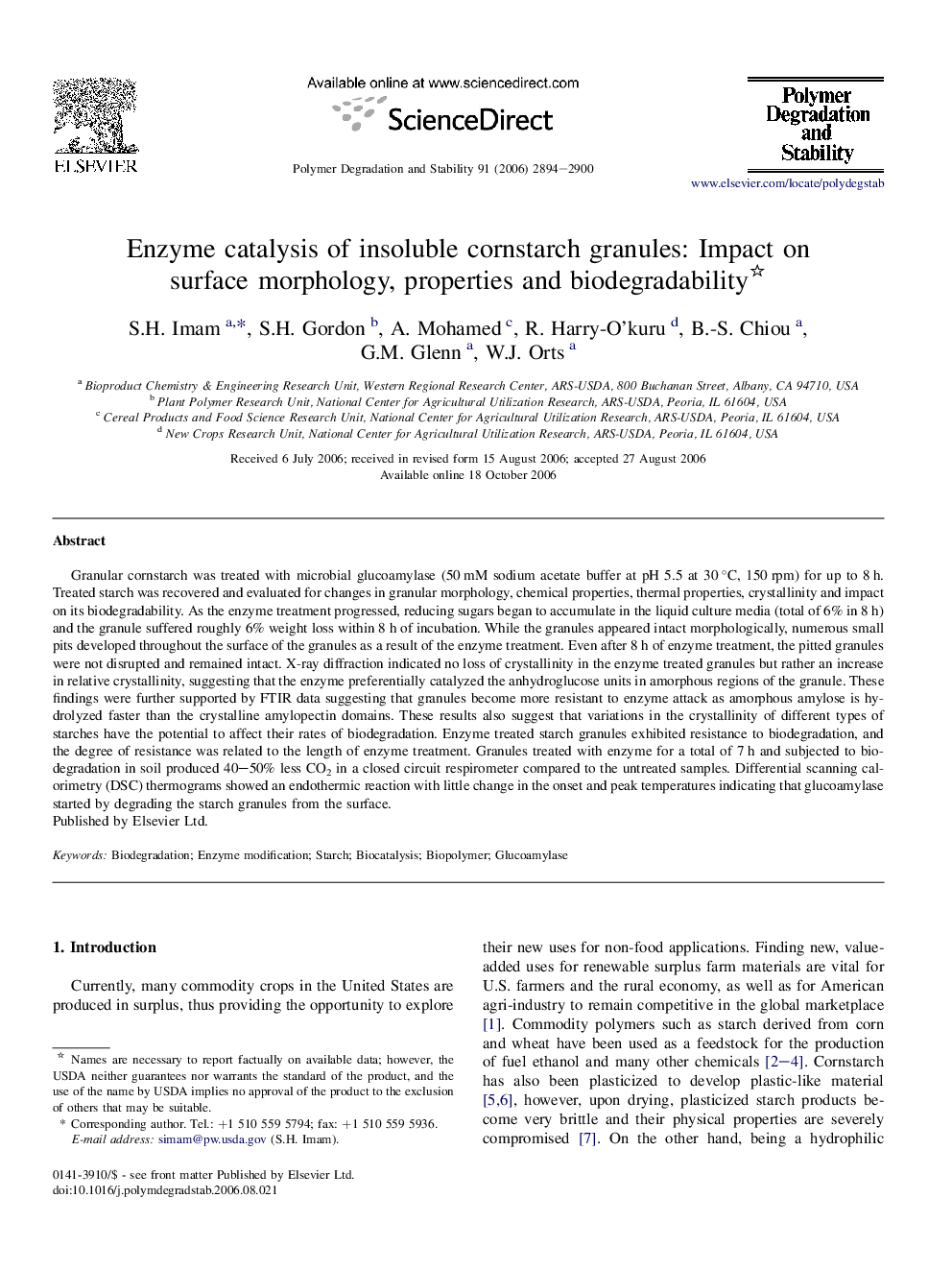| کد مقاله | کد نشریه | سال انتشار | مقاله انگلیسی | نسخه تمام متن |
|---|---|---|---|---|
| 5204920 | 1381976 | 2006 | 7 صفحه PDF | دانلود رایگان |
عنوان انگلیسی مقاله ISI
Enzyme catalysis of insoluble cornstarch granules: Impact on surface morphology, properties and biodegradability
دانلود مقاله + سفارش ترجمه
دانلود مقاله ISI انگلیسی
رایگان برای ایرانیان
کلمات کلیدی
موضوعات مرتبط
مهندسی و علوم پایه
شیمی
شیمی آلی
پیش نمایش صفحه اول مقاله

چکیده انگلیسی
Granular cornstarch was treated with microbial glucoamylase (50 mM sodium acetate buffer at pH 5.5 at 30 °C, 150 rpm) for up to 8 h. Treated starch was recovered and evaluated for changes in granular morphology, chemical properties, thermal properties, crystallinity and impact on its biodegradability. As the enzyme treatment progressed, reducing sugars began to accumulate in the liquid culture media (total of 6% in 8 h) and the granule suffered roughly 6% weight loss within 8 h of incubation. While the granules appeared intact morphologically, numerous small pits developed throughout the surface of the granules as a result of the enzyme treatment. Even after 8 h of enzyme treatment, the pitted granules were not disrupted and remained intact. X-ray diffraction indicated no loss of crystallinity in the enzyme treated granules but rather an increase in relative crystallinity, suggesting that the enzyme preferentially catalyzed the anhydroglucose units in amorphous regions of the granule. These findings were further supported by FTIR data suggesting that granules become more resistant to enzyme attack as amorphous amylose is hydrolyzed faster than the crystalline amylopectin domains. These results also suggest that variations in the crystallinity of different types of starches have the potential to affect their rates of biodegradation. Enzyme treated starch granules exhibited resistance to biodegradation, and the degree of resistance was related to the length of enzyme treatment. Granules treated with enzyme for a total of 7 h and subjected to biodegradation in soil produced 40-50% less CO2 in a closed circuit respirometer compared to the untreated samples. Differential scanning calorimetry (DSC) thermograms showed an endothermic reaction with little change in the onset and peak temperatures indicating that glucoamylase started by degrading the starch granules from the surface.
ناشر
Database: Elsevier - ScienceDirect (ساینس دایرکت)
Journal: Polymer Degradation and Stability - Volume 91, Issue 12, December 2006, Pages 2894-2900
Journal: Polymer Degradation and Stability - Volume 91, Issue 12, December 2006, Pages 2894-2900
نویسندگان
S.H. Imam, S.H. Gordon, A. Mohamed, R. Harry-O'kuru, B.-S. Chiou, G.M. Glenn, W.J. Orts,